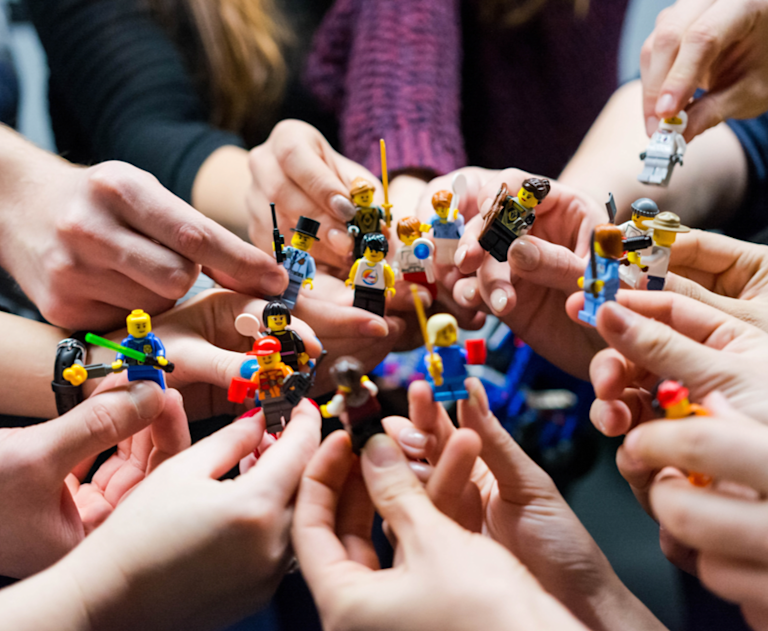Here at Tiny, we’ve been reflecting on our company culture lately and we’ve realized something interesting…our company culture closely reflects a key feature of our flagship product.
Tiny’s culture is much like its editor – WYSIWYG 😜 We’ve developed a WYSIWYG HTML editor, and an authentic, What You See Is What You Get company culture – all at once.
We chatted with a handful of our Tiny team members to hear what they think about our culture of authenticity, how it benefits them, and what they do to encourage authenticity at work.
The rise of authenticity at work
Until recently, many employees around the globe had a work persona and a home persona, switching from one to the other somewhere in the middle of their commute. This meant some people would avoid sharing some parts of their personality, interests, or opinions with colleagues, and instead, only present the parts that seem “professional” or directly related to the work. But studies and trends show that this practice is changing.
In one study, 23% of baby boomers reported asking for personal advice from a manager, but this went up to 75% for Gen Z. So, it’s safe to say the shift towards authenticity at work is likely to continue as Gen Z moves into the workplace. Not to mention the fact that many employees are now working from home in 2020, and the lines between work life and home life are increasingly blurred.
At Tiny, we’ve always encouraged employees to “bring their whole self” to work and be their authentic selves – in other words, what you see is what you get. And this kind of work culture has benefited our employees and our product, in a number of ways.
We have a diverse collection of individuals within Tiny, each with our own quirks and interests, a mix of personalities, and our global remote surroundings. That makes being yourself easy because we’re not expected to fit a specific mould.
3 benefits of authenticity at work
1. Collaboration and teamwork

One of the advantages of authenticity at work is that employees can get to know each other properly and work better together. It’s the perfect foundation for collaboration and teamwork, as it encourages people to reach out to each other, ask questions, and offer help. As a result, team members learn about one another’s strengths, weaknesses, interests, communication styles, goals, personal issues that might impact work, and more.
My team helps each other and are always willing to lend a hand and offer new information where applicable. This builds community within teams.
2. Engagement and well-being
An authentic work culture frees your employees to be themselves. One study found that managers in a company who acted in line with their true sense of self were more likely to say they had high levels of personal well-being. And in another study, 90% of employees said they perform better when their emotional wellness is supported at work. This makes sense – employees will be more engaged when they feel they are being heard and understood, and when they can do the things they actually care about, whether it’s work projects or social events.
3. Productivity

Trying to fit within a persona that’s not your authentic self is draining and time-consuming. Whether you’re dressing up in a shirt and tie (but you’d rather wear a band tee), using words that aren’t usually in your vocabulary, or attending social events that make you want to tear your hair out…it sucks up a lot of energy. But when you encourage an authentic work culture, your employees can save their time and energy for things that matter to them, and be more productive at work.
How to encourage a culture of feedback and communication
Too many employees avoid feedback or keep their ideas to themselves because they’re afraid of making mistakes, being judged, or looking silly. Fortunately, one of the nice side effects of an authentic work culture is that team members are more likely to communicate regularly, share ideas, and provide helpful feedback. And as a result, they’re more likely to do their best work and help create a better product or service for customers.
Modeling the kind of behavior you want to see (from the top down) is essential. Leaders should be open to receiving and discussing feedback, as well as providing feedback to their team. And they should be willing to share their own ideas (even silly/risky sounding ones) if they want their team members to come up with ideas and feel safe sharing them with the team, too.
I share my ideas, knowing that my idea may not be the best in the room but that it might help spark a genius idea from someone else. When it comes to feedback, I don’t just give it, but ensure I’m openly receiving it as well. Feedback doesn’t need to be a teardown of someone’s work, I find by trying to understand why decisions were made I can give constructive feedback in a way that is more conversational.
I try to encourage directly as well as providing encouragement through our performance management platform. I have a lot of communication methods.
5 ways we build an authentic work culture
1. Regular catch ups
15five’s 2019 Workplace Report found that teams with weekly check-ins (or even more frequent) were 73% confident in managers’ leadership, compared to 41% for teams with less frequent check-ins. 61% of the first group also reported that employers were extremely open to suggestions, compared to 29% of the second group. Finally, 84% of those with weekly check-ins (or more) were always honest with managers, compared to 58% with less frequent check-ins. Overall, the data shows that regular check-ins go a long way in building a strong, authentic work culture.
At Tiny, we have a range of events that are designed to help teams communicate socially and professionally, from Tiny Tea Tuesdays to daily standups and regular 1-on-1 meetings.
I love our Tiny Tea Tuesdays, Product & Design candours and our All Hands breakout rooms.
Since we’re now all working from home (for at least the rest of 2020), we’ve had to change the way we do regular catch ups (which we’ll cover in the next section!). You can also read more about Charmaine’s experience of joining Tiny and adjusting to remote collaboration.
2. Adapting to remote
We’ve had to adapt a lot of our work as our whole workforce has moved to remote work. And in some ways, it is trickier to build a strong, authentic work culture without face-to-face interaction.
But on the other hand, people are working in their home environments. Video calls provide a unique opportunity to introduce kids, pets, and personal taste (or lack thereof) in decor. And we’ve adapted many of our daily or weekly events by introducing things like social Zoom calls, non-work conversations on Slack (with all the emojis), and even multiplayer online gaming.
One way we’re encouraging our people to get to know each other across teams and globally is through our company all-hands meetings on Zoom. In addition to all the standard company announcements, these meetings include:
- Celebrations – We like to mention any birthdays and work anniversaries
- Shoutouts – We highlight significant individual and team achievements
- 5 Minutes of Fame – One person shares their story, including things like where they grew up, what they studied, and what they do for fun
- Breakout sessions – We are split into small groups so we can meet up with colleagues who we don’t regularly interact with (and if we’re stuck for what to talk about, our CEO has put together a list of questions based on these icebreaker activities)
These have been great ways to get to know each other’s authentic selves, even though we can’t all be in the same room together.
3. Getting away from the desk

Some of our Tiny team we surveyed mentioned the importance of catching up with colleagues outside of the office. While this looks a little different in 2020, we’ve found in the past that social outings, pub lunches, coffees, and even sitting together on the bus at the end of the day can all be great opportunities to connect and interact without focusing on work.
Plus, you don’t have to leave the office to catch up. Prior to COVID19, our new coffee machine was helping Tiny’s Brisbane team spend more time together in the kitchen, and we often had long chats in the lunchroom. And of course, the pool table, computer games, and board games all helped to bring the team together.
Whether in-person or virtual, when the work environment is a fun place to be that’s not 100% focused on the work, you can interact with colleagues in new ways and learn more about them.
4. Hire on merit
When you hire objectively, based on merit, you’ll naturally build a diverse group of people, from a range of backgrounds and locations, who will bring new perspectives to your organization and product. But this is good news for authenticity, too. It can help make employees feel safe to be themselves when everyone is unique in their own way.
5. Put your people first

We asked our survey respondents to give us three words that describe people at Tiny. The word that came up most was “passionate”. But as you can see, there’s a strong people-first theme emerging here, with words like genuine, caring, encouraging, honest, and encouraging. And that’s something we’re really proud of.
People care about each other, not just their work lives, but each other’s personal lives. Tiny’s managers see people first and employees second.
Encourage “WYSIWYG” in your workplace
Are you looking to encourage a people-first culture, develop authenticity at work, and make it safe for people to be WYSIWYG in your organization?
Here are some key takeaways to help you get started:
- The benefits are worth it – Authenticity can help your people feel more engaged, work better as a team, and be more productive
- Be the change – You have to model the behavior you want to see – CEOs, founders, directors, and managers should demonstrate authenticity themselves
- See the person – Look at your colleagues as fellow human beings, not just professionals
- Communicate – Be curious about people, ask questions, and ask for feedback
- Share ideas – Be vulnerable and speak up next time you have a silly idea (it might pave the way for a very good idea)
What’s your company culture?
We think it’s fun that our product and company culture can both be described as being WYSIWYG, and we’re also proud of the fact so many of our employees feel comfortable to be themselves at work.
What does your company do to encourage a WYSIWYG attitude in your workplace? Start a conversion with us over on Twitter at @joinTiny!
